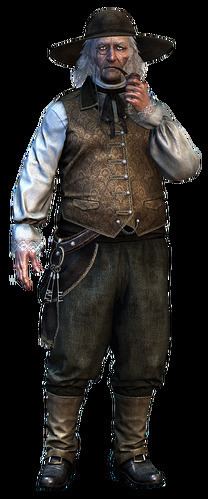Rank Lieutenant-Colonel | Years active c. 1659-1671 Name Lawrence Prince | |
 | ||
Battles/wars Raid on Granada (1670)Sack of Panama (1671) | ||
Laurens Prins known in English as Lawrence Prince (c. 1630s, Amsterdam - after 1717) was a 17th-century Dutch buccaneer and an officer under Captain Sir Henry Morgan. He and Major John Morris led one of the columns against Panama in 1671.
Biography
According to Spanish accounts, Lawrence Prince was a Dutchman from Amsterdam who arrived in the Caribbean in the late 1650s. In 1659, he was one of four men, including John Morris and Robert Searle, who bought a captured Spanish prize from Commodore Christopher Myngs following his ten-week voyage. Prior to joining Morgan's forces at Port Royal in November 1670, he had previously sailed up to Rio Magdalena intending to raid the town of Mompos located 240 kilometres (150 mi) inland. Prince was forced to retreat, however, when they were surprised by cannon fire from a recently built island fort protecting the settlement. Prince and his men, determined to "make voyage", sailed north to Nicaragua in August. As in Colombia, Prince sailed up the San Juan River, captured a Spanish fort and paddled by canoe to Lake Nicaragua where they successfully raided Granada. This was almost identical to Morgan's raid in 1664. Official Spanish reports of the incident claimed that Prince "made havoc and a thousand destructions, sending the head of a priest in a basket and demanding 70,000 pesos in ransom."
Arriving in Port Royal weeks later, he and two other captains were reproved by Governor Thomas Modyford for attacking the Spanish without a commission or letter of marque. Modyford thought it prudent not "to press the matter too far in this juncture" and ordered them to join Morgan on his raid against Panama, "which they were very ready to do". Impressed by his raid at Granada, Morgan appointed Prince third in command under himself and Captain Edward Collier. He and Major John Morris later led the vanguard, numbering 300 buccaneers, against the Spanish fortress on the morning of January 28, 1671. Prince supported the main force, around 600 men, with Morgan and Collier leading the right and left wings, while the rearguard was commanded by Colonel Bledry Morgan.
In the final advance, he and Morris commanded the left flank. Advancing in a wide sweep around the Spanish right flank, they captured a hill overlooking the Spanish lines. This not only forced the Spanish defenders into committing to an attack, it also disrupted plans by their commander, Juan Perez de Guzman, to stampede a herd of cattle and other livestock towards the advancing buccaneers. He had kept them behind his infantry line, intending to allow the buccaneers to pass through his lines, and setting them against the attackers to presumably disrupt and disorganize them just before the Spanish foot made contact with the buccaneering force. Instead, the Spanish cattle drovers were scared away by Prince's attack, allowing the cattle to wander among the Spanish lines. A simultaneous assault on the hill and against Morgan's advancing buccaneers ended in disaster as concentrated volley fire decimated Spanish forces, which suffered 100 casualties in the first volley alone. The wandering cattle and concentrated fire, left between 400 and 500 dead and wounded before the Spanish finally retreated from the field.
He was later appointed a lieutenant by Modyford's successor, Sir Thomas Lynch, who replaced Captain John Wilgress, commander of HMS Assistance, with Major William Beeston. Lynch may have intended to initiate the restructuring of colonial administration, surrounding himself with known associates rather than appointed officials of the British crown. By 1672, using his share from the Panama raid, Prince became a wealthy landowner on the Liguanea plain as it was opened up for cultivation and farming.
In 1715, back in Bristol, England, Lawrence Prince was appointed as captain of the galley ship Whydah, and in the fall of 1716 the Whydah was commissioned to take goods and treasure to the slave trading port of the African Kingdom of Whydah in present-day Benin. After loading the Whydah with 367 African slaves he sailed across the Atlantic to sell them in Jamaica. But in February 1717, as he passed between Cuba and Hispaniola, he was chased by the Sultana, captained by the pirate "Black Sam" Bellamy, and the Mary Anne, captained by the pirate Paulsgrave Williams. After three days, captain Lawrence Prince surrendered without a fight. After taking command of the Whydah and making it his flagship, Bellamy gave Prince his original flagship the Sultana along with a small amount of treasure, and sent Prince packing back to England. Lawrence Prince made several slaving voyages before disappearing into history.
